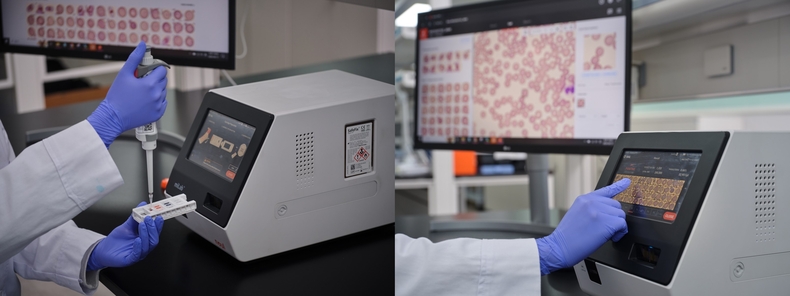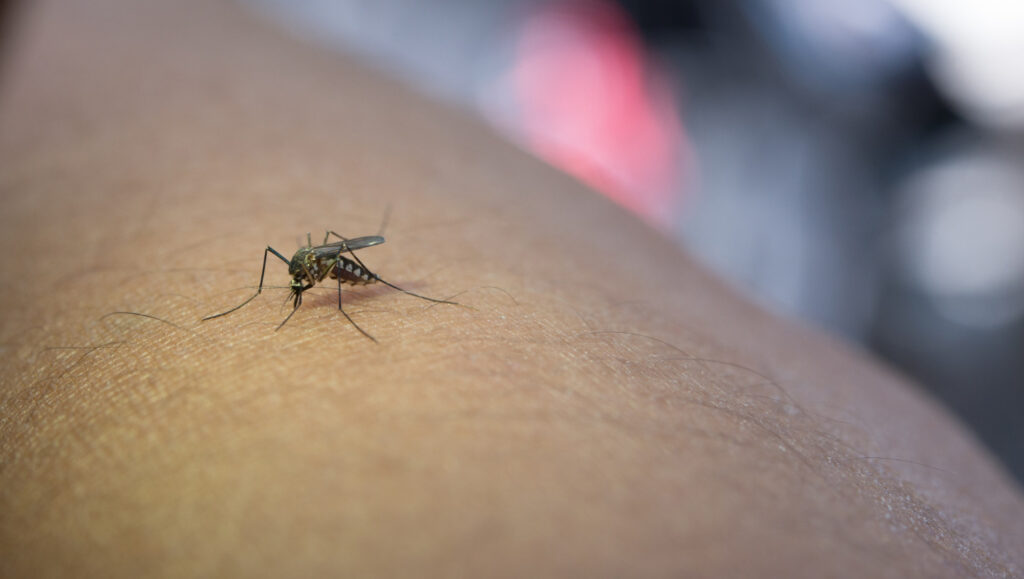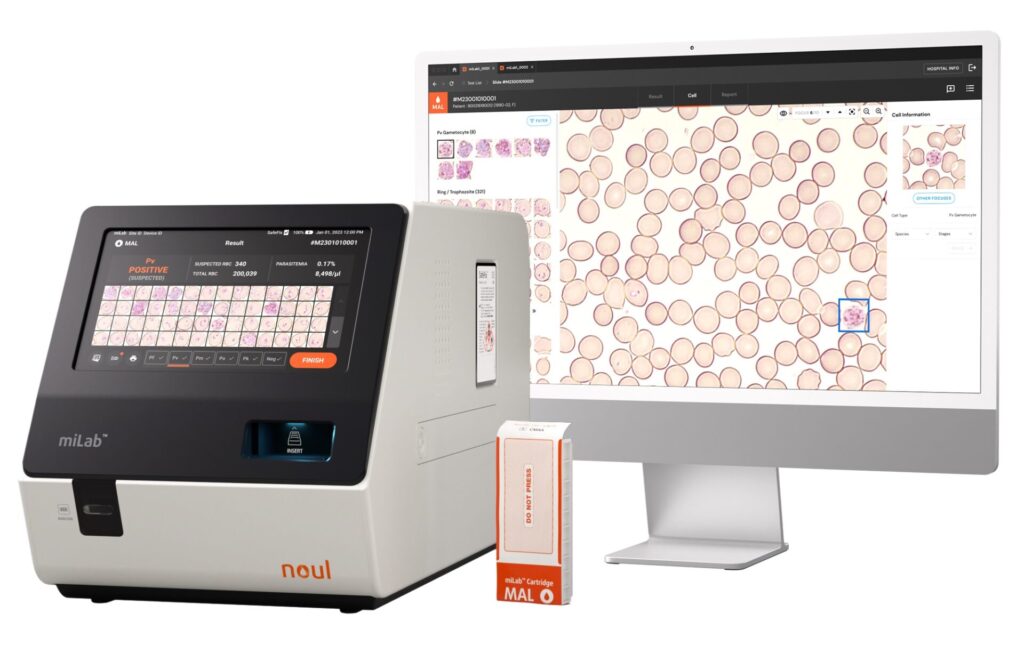Rapid malaria detection is crucial for saving thousands, if not millions, of lives worldwide. The earlier we can diagnose a case, the sooner we can take preventative measures not just to treat one individual with antimalarial drugs but also to protect the community.
Prof. Hans-Peter Beck, professor emeritus at the Swiss Tropical and Public Health Institute, has first-hand experience with malaria and other tropical diseases. His expertise in molecular parasitology, particularly his groundbreaking work on malaria, includes protein-protein interactions and antimalarial drugs.
In his current role at NOUL, Prof. Beck is spearheading the development and testing of the miLab™ MAL, a revolutionary malaria detection platform. He sat down with us to discuss his insights and explore the growing importance of advanced diagnostics tools in achieving global health goals and tackling malaria in non-endemic regions.
Prof. Beck’s Long-Standing Collaboration with NOUL
 Source: NOUL
Source: NOUL
Professor Beck isn’t new to NOUL and its incredible advancement. He first visited us around a decade ago to witness the machine and advise on its development.
“Initially, I just saw this machine (miLab™ MAL) and the concept of the machine and having had all the problems in our studies with microscopy, I thought now that’s something we need,” he explains. “You know, there can be improvements, of course, but it’s the best we have, I think, in the field of malaria microscopy.”
One of the big challenges the professor highlighted was the financial incentives for companies to develop cutting-edge products for malaria prevention. Malaria is a disease of poverty, and “there isn’t much money,” meaning that it was NOUL‘s values that led it to address malaria detection in low-resource settings. That’s why Prof. Beck signed up with the NOUL cause.
miLab™ MAL: Revolutionizing Malaria Detection
 Source: NOUL
Source: NOUL
Okay, so the miLab™ MAL is a seriously impressive piece of kit with the potential to improve malaria detection everywhere from Cambodia and Brazil to non-endemic regions. But how does it work?
Well, the platform harnesses the power of artificial intelligence (AI) to automatically evaluate a blood sample. It examines the size and morphology of blood cells, looking for likely indicators of malaria. Because it eliminates the need for human intervention, the workflow becomes more streamlined and efficient, and there’s less risk of human error.
It was one feature that impressed Prof. Beck initially. “When I saw the machine (miLab™ MAL), that was actually why I got so excited about the machine because everything is done automatically. And in principle, it’s foolproof; there isn’t much room for human error, and therefore, the data are of excellent quality.”
Indeed, the miLab™ MAL represents a lead forward in malaria detection. Compared to traditional microscopy and manual methods, the miLab™ MAL is faster, more accurate, and more efficient. The device requires minimal training compared to the traditional laboratory techniques. Perfect for resource-deprived regions that struggle to afford an entire testing facility.
Field Experience: miLab™ MAL in Practice
 Source: NOUL
Source: NOUL
In the field, miLab™ MAL shines with its straightforward and reliable performance, as Prof. Beck observed during his work in Ethiopia and Malawi. He noted, “You just put in this drop of blood into the machine, slide it in, and out it comes with the results,” highlighting the system’s ease of use even in the most basic laboratories.
Prof. Beck is particularly inspired by miLab™ MAL‘s role in settings where malaria is becoming rare, such as Cambodia or Brazil. Here, traditional skills in malaria microscopy are dwindling, yet miLab™ MAL, with its AI-driven accuracy, consistently delivers precise diagnostics unaffected by the low frequency of cases. This robust reliability extends to regions nearing malaria elimination, where miLab™ MAL could play a crucial role in reactive case detection, quickly diagnosing and containing outbreaks.
Given the relative unreliability of traditional results and the difficulty of training new staff, the miLab™ MAL is a game-changer. Providing consistent diagnostics is crucial, and since the “AI-driven machine won’t lose experience,” it offers a lasting solution for struggling regions.
Prof. Beck sums up his experience: “The machine’s ability to provide consistent diagnostics is the beauty and the power of this machine.”
miLab™ MAL’s Potential in Global Malaria Elimination
 Source: Freepik
Source: Freepik
The battle against malaria is far from over. Despite decades of malaria prevention efforts, in 2023, there were still an estimated 263 million cases and 597,000 malaria deaths worldwide. However, Prof. Beck believes that the miLab™ MAL is the answer.
Current efforts at malaria prevention rely on “reactive case detection.” When one case is detected, a team goes around the local region, rapidly testing everyone to prevent a malaria outbreak. It’s here that the miLab™ MAL could be instrumental.
“I can see the miLab™ MAL instrument could be standing in many places, even in mobile places. Mobile teams could go out there and test the people around this index case,” explains Prof. Beck. It’s an ideal platform for such hotspot regions where permanent testing facilities simply aren’t viable.
Given the platform’s portability and affordability, the miLab™ MAL addresses many of the challenges of malaria detection in both endemic and non-endemic countries. “I think it could take tremendous importance and play a role in improving global health, particularly for malaria.”
Click here to find out more about how malaria is transmitted.
Future Prospects for miLab™ MAL in Malaria Diagnosis
 Source: NOUL
Source: NOUL
So, what’s next? Well, Prof. Beck’s vision is to integrate NOUL‘s miLab™ MAL into malarial regions throughout the world. He believes it’s a critical tool globally, particularly in hotspot locations in non-endemic countries where malarial detection facilities are lacking or absent.
But to achieve this, it means the integration of miLab™ MAL into the broader diagnostic frameworks. Countries must know of the device, understand how to use it best, and rapidly put it into action.
As for NOUL and Prof. Beck’s partnership, it’s hoped that the platform will continue to expand into other tropical diseases. Together, we know that we can reshape the future of precision medicine and malarial prevention in underserved communities.
Explore the transformative power of NOUL‘s miLab™ MAL and witness our commitment to global health in the fight against malaria. Delve into how this AI-driven technology advances consistent, reliable diagnostics and preventive measures. Visit our product inquiry page to learn more about NOUL‘s dedication and innovative solutions in global health.

